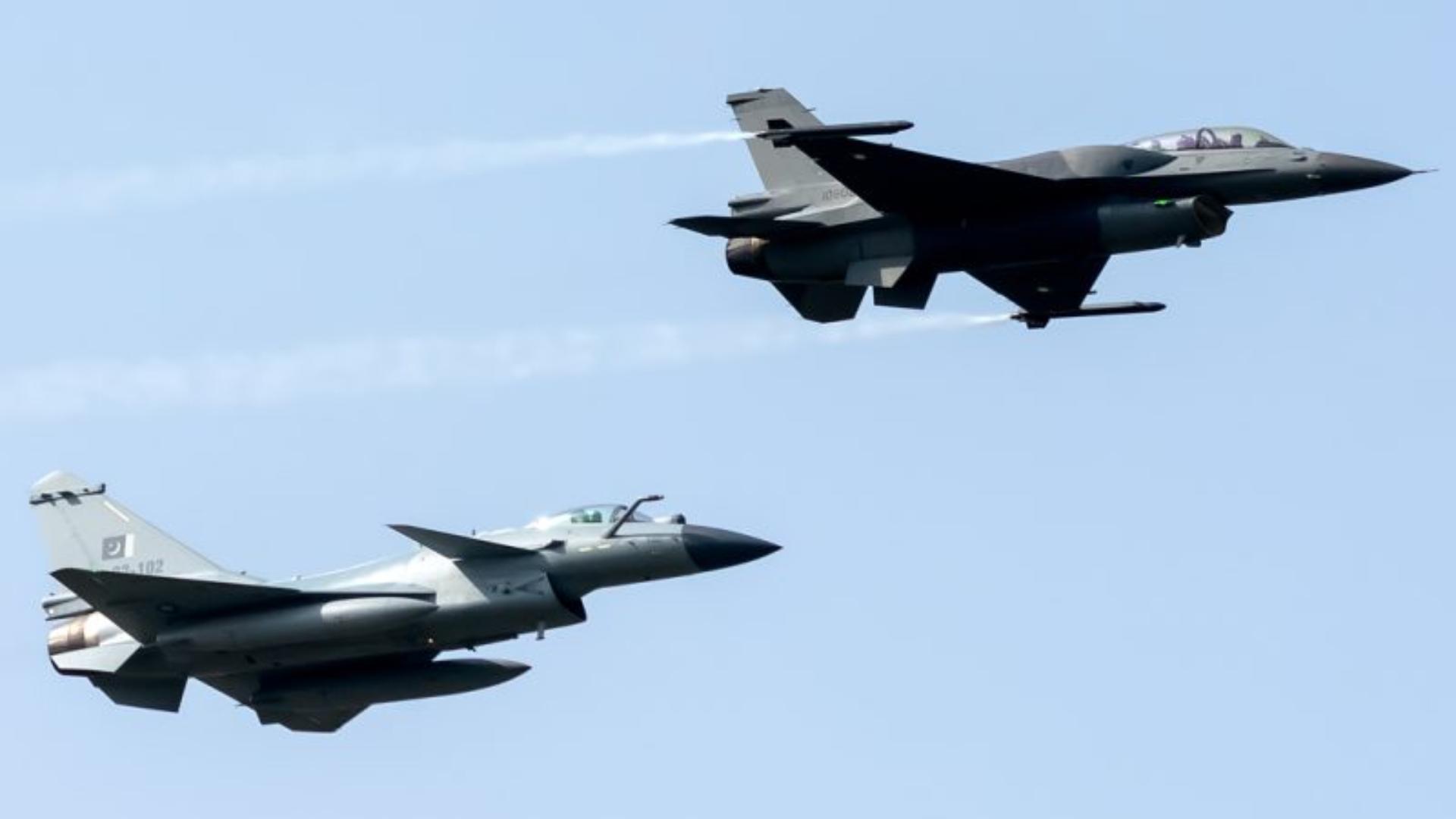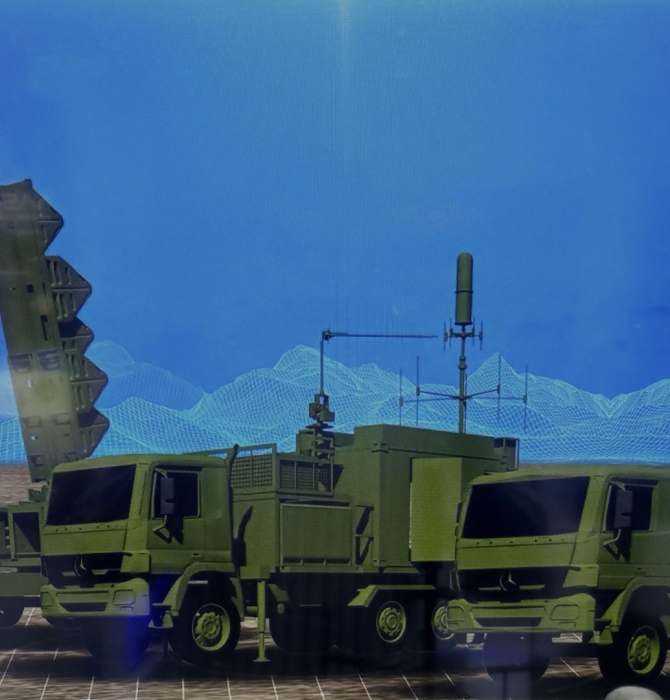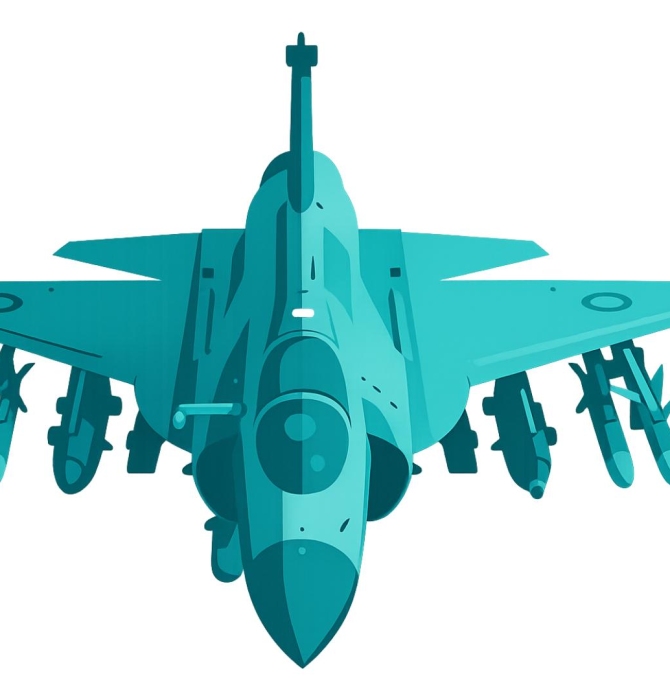16362Views

The One Fighter the Pakistan’s Air Force Needs More Than Stealth Quwa Premium
Main Takeaways:
Stealth Isn’t the Priority: The J-35 stealth fighter is too new, complex, and unproven for the PAF to acquire in the near term.
Combat ‘Mass’ is Crucial: Modern airpower doctrine shows that a large number of reliable “workhorse” jets are needed to deliver firepower and support stealth operations.
The JF-17 Has Limitations: As a lightweight fighter, the JF-17 lacks the combat radius and payload capacity needed to fulfill this “mass” strike role effectively.
The J-10CE is the Solution: The PAF’s most logical step is to expand its medium-weight fleet by procuring more J-10CE fighters to build essential capacity before considering a stealth jet.
With the Pakistan Air Force (PAF) signalling its interest in the Shenyang J-35AE (e.g., recently including an image of the fighter in a display at the Aerospace Power Center of Excellence), the discussion of low-observable (LO) next-generation fighter aircraft (NGFA) understandably draws significant observer attention and focus.
However, while the discussion of LO NGFAs captures immediate attention, the PAF is, in reality, much farther out from inducting such platforms.
First, the J-35A is a new platform and lacks the operational maturity the PAF generally seeks from its new procurements. Being a LO NGFA, the J-35A is also a complex platform with unique attributes and challenges that would not be seen in 4+/4.5-generation aircraft. Thus, between teething issues and the new challenges of supporting a LO NGFA, the groundwork or urgency for induction is not there.
Second, the PAF has also yet to properly evaluate the J-35A within Pakistan to see how the platform fares locally and if feedback needs to be given to Shenyang for user-specific improvements. Third, the PAF has also yet to build the wider capacity to support LO NGFA-led operations.
The most recent live operational use of LO NGFAs happened in the recent conflict between Israel and Iran, with the former deploying its F-35I. In Operation Rising Lion, the F-35Is closely interoperated with Israel’s F-15I and F-16I multirole fighters, with the latter – arguably – delivering most of the payload or munitions bulk against Iran. In other words, where LO NGFAs ostensibly drive initial effects in combat, the older generation multirole fighters ensured a lasting impact.
The F-35I exposed Iranian radar/air defence activity, carried out suppression of enemy air defence (SEAD) operations, and cued targets for the other fighters. However, it was the F-15I and F-16I that seemingly generated the attack volume (e.g., against missile launchers, storage sites, etc), creating a ‘lasting’ impact that could control the direction of the conflict in Tel Aviv’s favour.
This approach is not unique to Israel. Every major employment of LO NGFAs – i.e., US, UK, China, Japan, South Korea, Italy, Spain, Russia, and Israel – involves the tandem use of 4+/4.5-generation aircraft, with the latter likely being used to generate sortie volume and payload output. It seems that inducting LO NGFAs with 4+/4.5-generation platforms seems to be the strategy of air arms that see themselves carrying out independent air operations.
For example, Algeria will soon induct the Su-57 as its LO NGFA. However, in addition to the Su-57, Algeria is also procuring the Su-34, a dedicated strike fighter with a heavy payload capacity. Algeria could also draw on its existing fleet of Su-30s for additional payload output.
Granted, there are many countries that have selected the F-35 as their sole fighter platform. However, the majority – if not entirety – of these countries are NATO powers. In all likelihood, these states likely see themselves pooling their assets into multi-national coalitions. These countries – i.e., Netherlands, Belgium, Denmark, Finland, Norway, and Romania – will not engage in offensive operations alone, but through NATO. Otherwise, they (along with Switzerland) would deploy their assets defensively.
The other F-35 users, however – i.e., South Korea, Japan, Israel, Poland, Singapore, and potentially Turkey – all see themselves as potentially operating offensively alone and, as such, maintain larger numbers of 4+ and 4.5-generation fighters like the F-16, F-15, Typhoon, and (in Korea and possibly Poland’s case) KF-21 fighters to drive volume.
Even China, which does operate large numbers of LO NGFAs, will also draw upon its indigenized Flanker-series. Thus, the PAF will likely model itself on the assumption of utilizing NGFAs to lead operations, but for that doctrine to succeed, it needs a platform for mass.
Why a Stealth Fighter is Not a Near-Term Priority
The PAF evidently wants to induct a LO NGFA. Indeed, previous Quwa analyses inferred that Air Headquarters (AHQ) is aiming to build its future offensive doctrine around LO NGFAs alongside unmanned combat aerial vehicles (UCAV) and other smart munitions. However, this will not fully materialize in the near term and each input is contingent on the technology maturing and being absorbable to the PAF at the cost and efficiency it would prefer.
The issue with the J-35A at this time is that the PAF has yet to test and validate those factors:
First, the PAF did not test the J-35A in Pakistan, which will matter because the fighter needs to be evaluated for both its performance and maintainability. The J-35A is a LO system with very specific inputs designed to achieve its stealthy capability, like its skin, for example.
You’ll need to login or subscribe to Quwa Premium to access the full article.
Existing Quwa Plus/Pro members can log in below
Note: Logged in members may need to refresh the article page to see the article.


